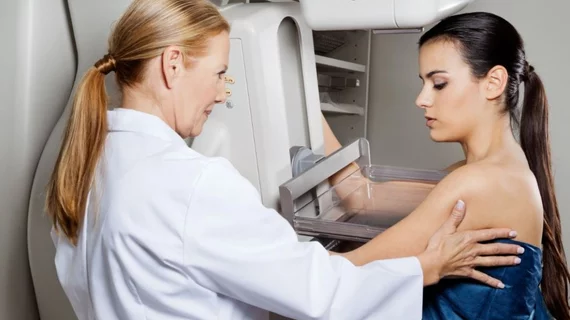Experimental DBT protocol slashes radiologists’ read times while retaining accuracy
A new experimental protocol reduced radiologists’ digital breast tomosynthesis interpretation times without sacrificing diagnostic accuracy, according to a new study.
University of Michigan Health System researchers shared their experience, using 6 mm slabs with a 3 mm overlap instead of 1 mm slices, Tuesday in Radiology. Compared to standard protocols, the new approach lowered mean DBT read times for three of four experienced breast radiologists without overlooking additional cancers.
The new thickness protocol may be an effective tool in relieving overworked imaging experts, Akshat C. Pujara, MD, with the Ann Arbor, Michigan, institution’s Department of Radiology and colleagues noted.
“As DBT use increases around the globe, the effect of DBT on clinical workflows is of particular importance. Longer interpretation time, greater demands on radiologists, and increased information technology needs required by DBT must be addressed for continued sustainability,” the authors wrote.
Our results suggest that alternative reconstruction algorithms may maintain diagnostic performance while reducing interpretation time and may therefore represent a promising approach to mitigating these challenges,” they added.
For the study, four fellowship-trained breast imaging rads interpreted DBT exams using a standard protocol (10 mm slabs with 5 mm overlap and 1 mm slices) and the new protocol. Each was combined with 2D synthetic mammography. In total, 122 women who received an exam between Aug. 2013 and July 2017 were included.
In addition to faster times, each approach boasted similar areas under the receiving operating characteristic curve scores for detecting malignancies, the authors noted. The 6 mm technique also decreased the mean number of images and file sizes by 72%.
Jung Min Chang, MD, PhD, with Seoul National University Hospital’s Department of Radiology, reviewed the study in a related editorial published Tuesday. She noted that Pujara et al. extrapolated their findings to show that a radiologist reading 5,000 DBT exams per year could save up to 75 hours and interpret 1 million fewer images. All without sacrificing accuracy, she added.
Although the results are not immediately applicable to the wider screening population, Chang said that they serve as a useful jumping-off point moving forward.
“Their (Pujara et al.) current study shows the need for larger prospective studies, including screening population and women with dense breasts,” Chang wrote. “Ultimately, such work may help us discover the most effective digital breast tomosynthesis interpretation methods in both screening and diagnostic populations.”

